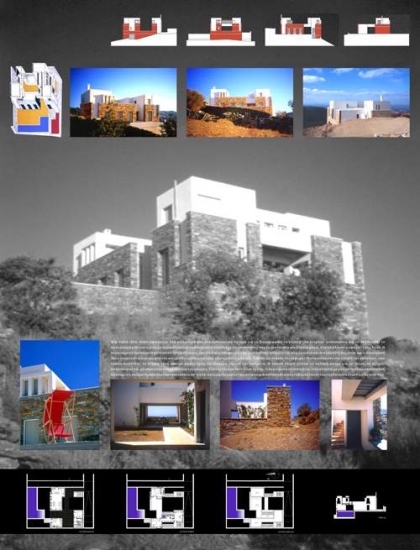
Our house is the place where we see our loved ones, there we rest, make love, read, and live. Less and less houses are built in the suburbs and more and more maisonettes are coming along. Many apartment buildings and loft-apartments are being built in the city center. Athens is changing and no one can say how it will look tomorrow.
The Greek Architecture Institute organized an exhibition called “My Home in Athens from the 20th to the 21st Century,” which tracks this period. It will be displayed on Peireos Boulevard in the new Benaki Museum from January 20th till March 15th. Because of this Kathimerini newspaper published the comments of some famous Greek architects about the metamorphosis of their city.
A new poor class with a lot of debts
Dimitris Philipidis
The bourgeoisie is almost gone and a new poor class is coming out with a lot of debts. Also we have thousands of unsold apartments in the older buildings. The social class, which can afford a new apartment, is that of the economic elite. For the representatives of this class is not enough only to spend but to build monuments from the apartment-mausoleum type in a complete control environment.
Apartments for contemporary nomads
Zisis Kotionis
http://www.heliarch.gr/BIENNALE/ENOTITA3/KOTIONIS/Kotionis.htm
Compared to before, the contemporary architecture is oriented more towards the needs of the society rather than the environment. Among falling apart buildings, new architect practices are coming along for their reconstruction. Young couples – hetero and homo sexual, families with one parent, artists and vanguards, who avoid the idea of a Greek family create new cultures for the city co-existence. They rebuild and remake apartments – professional and industrial spaces and transform them in a fantastic way.
A new trend in living outside of the city is coming, which is still on an academic level. We bypass the thought of a luxury apartment and go to researches for contemporary practices of living, where a contemporary nomad way of life is being sketched – with light, temporary, made up, and imaginary constructions. If the plans which right now, are on experimental level, start being implemented, then in the future we will have apartments, which will have less energy expenses and will be cheaper.
The research on the “green” architecture will provide us with very important results only if it offers new models of living outside the biological sphere of the city life into private, controlled apartments.
What are we going to build as a replacement of the apartment buildings?
Panos Dragonas
http://www.heliarch.gr/BIENNALE/ENOTITA4/dragonas_xristopoulou/dragxrist.htm
The Athenian buildings played a significant role in the formation of the Greek cities. Some very interesting steps are being made during the last 15 years to develop the architecture of those buildings. To a great extend this is owed to the appearance of young architects, who have been studying the specifics of the Greek cities. Many of the buildings are examples of one mature Greek modernism. But the apartment buildings as such are buildings, which are made up in order to satisfy the construction needs from after the Second World War. Right now the requirements for an apartment are different than 60 years ago – Greek cities are suffocating from the lack of open spaces. In some of the more developed neighborhoods in the Athens center and in the expensive suburbs there are more modern solutions, which respond to the new social, functional requirements of the environment.
The city and the “house”
Dimitris Tzakalakis
If the city is the most modern invention of modernism, then we can ask ourselves – why everybody wants to live among nature? Part of the answer to that question is hidden in the condition of the city apartments. The cities lived through the first big changes during the industrial revolution and whether to live in the city was an important question for the modern movement in the beginning of the 20th century. They looked after the ones in poverty and wished to increase their quality of life. All of a sudden the cities start growing with an unseen speed. The problem in Greece is that the cities do not have an expansion plan. No one looked for the opinion of an architect and the contractors acted as they pleased.
The apartments need to be consistent with the changes of society – the number of family members and families as a whole is decreasing, the number of people, who live either alone or with a roommate, is increasing. The rooms in the new apartments need to be consistent with the fact that people work and have fun in their homes. If we take this fact into consideration, then this will lead to a new understanding of classic apartments. If, from now on, more gardens, alleys, and squares are built in between buildings, then people will feel more comfortable in their own city.
Benaki Museum exhibition
The exhibition is divided in two parts. The first one presents a flashback of the architects’ creations, which have contributed for the development of the contemporary Greek apartment during the second half of the 20th century. And the second part presents 73 contemporary buildings – mostly houses. Half of them are in Athens, where 1/6th of them are in the center and the rest are in the suburbs. Curators of the exhibition are Alexandros Topazis and Stavros Giftopoulos.